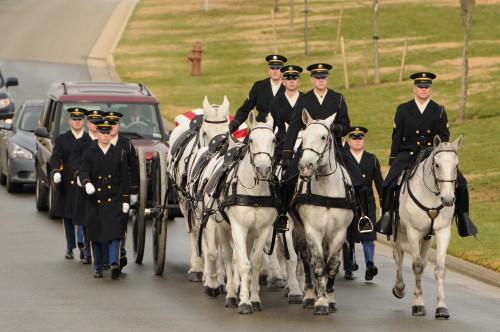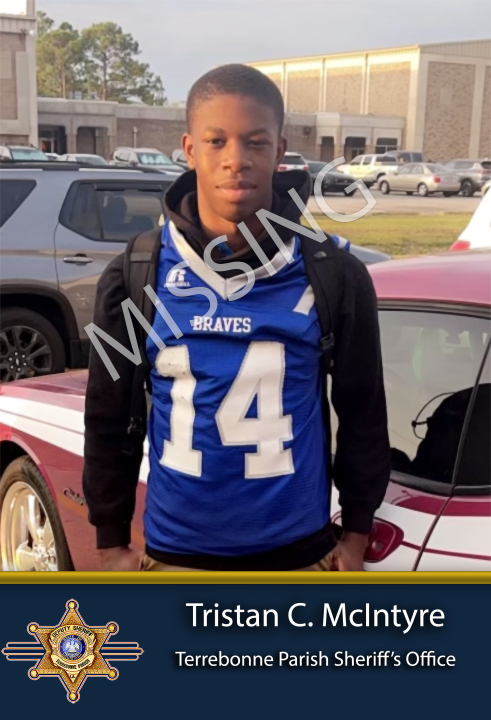Jindal administration continues to skirt records openness
December 19, 2012
Lafourche Central Market makes opening official
December 19, 2012Roger Songe and Roy Youngblood, two of many Vietnam veterans living in the Tri-parish region, never knew James Johnstone.
But they are among local veterans who said burial of the Baton Rouge army captain last week at Arlington National Cemetery, 46 years after his death during a reconnaissance mission over Laos, stirred emotions, offered comfort and also hope.
The hope is that officials will continue having success as they search for service members still missing from that war and others.
“He is from Louisiana and so that means a lot to all of us,” said Songe. “It is one more of our boys coming home.”
Capt. Johnstone was buried last Wednesday at Arlington National Cemetery. He was the pilot of an OV-1A Mohawk, a helicopter-plane hybrid used extensively during the Vietnam era, when the aircraft crashed in Attapu Province, Laos, on Nov. 19, 1966.
According to Air Force Major Carie Parker of the Joint POW-MIA Accounting command in Hawaii, Parker and other pilots were scouting the area near a high ridge at about 2 p.m. that day.
Johnstone’s aircraft was seen climbing during a left turn to clear the ridge.
“The aircraft then appeared to slip to the left. The left wing hit a tree and crashed immediately,” she said. “They did not see anyone eject. They saw the wreckage and felt the crash was not survivable. About 15 minutes after an Army helicopter crew observed the remains of one individual near the crash.”
A ground search was attempted but had to be called off due to heavy presence of hostile forces, Parker said.
As part of ongoing efforts to recover the remains of missing service members, teams from the Joint POW/MIA Accounting Command with the help of Laotian personnel began interviewing potential witnesses in 1993. Excavations of the crash site were undertaken and other aspects of the investigation continued through 2009.
They located human remains, military equipment, an identification card bearing Johnstone’s name and the OV-1A’s wreckage.
Forensic identification tools including dental comparisons were used to affirm the remains, and late this year they were officially identified.
Shawn Johnstone, who now lives in Colorado, never knew her father. She and her twin brother were born six weeks before their father’s aircraft went down. In a telephone interview last week she said she never gave up hope that he would be found.
She recounted the turns and twists the investigation took over the past few years. Government teams initially had a bad location for the crash site, which was corrected, she said, by an old army buddy of her father’s. The most amazing twist, she said, concerned her father’s molar, the tooth that was used to make the identification official.
It was wedged in a board at an illegal logging site, she said, noting that if rain or some other happenstance washed it away, identification might never have been made.
“It was miracles on top of miracles,” she said.
Last Wednesday afternoon she and her father’s sister were present at Arlington for Capt. Johnstone’s final journey.
The remains, in a silver, flag-draped casket, were borne to the burial space at Arlington’s Section 60 on a caisson drawn by six white horses – three with riders and three without, as tradition dictates – with an Army band and full honor guard.
Section 60, in the cemetery’s southeast quadrant, has been called “the saddest acre of America,” primarily used for soldiers, sailors, airmen and marines killed since 2001 in what officials call the “global war on terror.”
After the sounding of taps, the flag that covered the casket was folded by a precision team of the Army’s historic 3rd Infantry Regiment, it was presented to Shawn Johnstone at the graveside, by a platoon leader who intoned the words “on behalf of a grateful nation as an expression of appreciation for the honorable and faithful service of your loved one.”
Songe and other local veterans – there are about 400 from the Vietnam era in Terrebonne and Lafourche alone – said they were moved by the level of honors the captain from Baton Rouge received.
“I think about that often, that we left some back there,” Songe said. “A lot of them were unaccounted for and it means a lot that someone was found.”
Songe served during the Tet Offensive, in 1968 and 1969. Speaking of Johnstone’s identification and burial brought the time of his own service to mind.
“I was on an armored personnel carrier, we lugged around a lot north of Saigon,” Songe said. “We traveled around the Cambodian border, through the rice paddies.”
He found it easy to identify with another Louisiana soldier, recalling his own bewilderment after being drafted, ending up a world away in the midst of combat.
“I had never been anywhere,” he said. “I was 18-years-old and had never been out of the state of Louisiana, and they sent me to Vietnam, my first time flying. I thought I was tough. And once I got there I was too scared to do anything.”
What he did do was survive, acknowledging that in combat, the nation’s mission sometimes takes a back seat to the more immediate one, preserving one’s own life and those of fighting comrades.
Talk of Johnstone’s funeral stirred memories for Youngblood as well.
He was a crew chief on a B-57 and also flew F-100 fighter planes for the Air Force.
He shied away from veterans groups until a few years ago and now finds the company of others who fought comforting.
“That was a big to-do in them days, fighting for the country,” he said. “With the Vietnam war we didn’t know exactly what we were fighting for. But it was like a brotherhood. I don’t regret going in the service. I was fortunate. Where we were, we were dropping the napalm and the 750 bombs. I was very fortunate. We got mortared every night.”
He grew silent, then reflected again on the burial of Capt. Johnstone. The news hit home.
“That was one of our boys,” he said.
Members of the Army’s 3rd Infantry Regiment escort the caisson-borne remains of Capt. James Johnstone to a burial site at Arlington National Cemetery last week. Johnstone, a Baton Rouge native, was killed during a mission over Laos 46 years ago.












